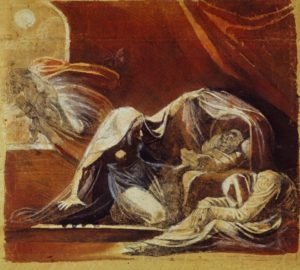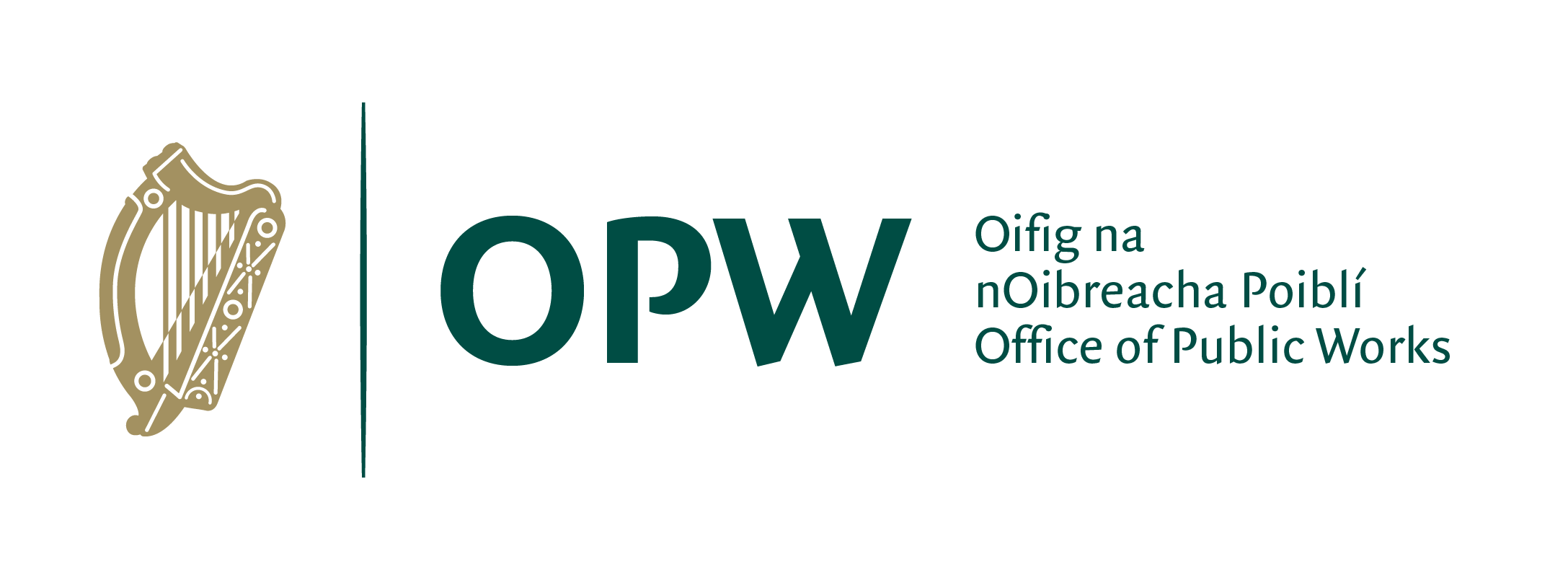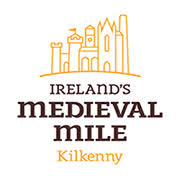Folklore and Fairies and the Question of National Identity.
Due to its complexity folklore does not have a single definition. One definition, includes Folklore, as a historical and cultural process producing and transmitting beliefs, stories, customs, and practices. Folklore is an important part of national identity. As it can be studied as an understanding of how people live, giving an insight into people’s daily life. Irish folklore, when mentioned to many people, conjures up images of banshees, fairy stories, leprechauns and people gathering around, sharing stories. Many tales and legends were passed from generations to generations, so were the way to celebrate important moments such as marriages, deaths, birthday. Folklore came to be regarded as and transformed into a valuable, national heritage particularly fitting for countries, such as Ireland, in search of a strong, national identity
During the 16th century, English colonisation overthrew the traditional political and religious autonomy of the country. The Great famine of the 1840s, and the deaths and emigration it brought, weakened a still powerful Gaelic culture, especially within the rural population. At the time, intellectuals such as Sir William Wilde expressed concerns on the decay of traditional beliefs:
‘In the state of things, with depopulation the most terrific which any country ever experienced, on the one hand, and the spread of education, and the introduction of railroads, colleges, industrial and other educational schools, on the other – together with the rapid decay of our Irish bardic annals, the vestige of Pagan rites, and the relics of fairy charms were preserved, – can superstition, or if superstitious belief, can superstitious practices continue to exist?’ (Wilde 10-11)
The struggle for Home Rule (self-government) in Ireland became dire after the Great Famine hit in 1845, Redcliffe N. Salaman, the author of The History and Social Influence of the Potato announced that the ‘…state of Ireland in winter 46-47, has convinced me that it would be impossible to exaggerate the horrors of these days, or to compare them with anything which occurred in Europe since the Black Death of 1348’ (Salaman 300). The famine had the greatest impact on the Gaeltacht areas, ravishing the rural Gaelic speaking areas by death and emigration. Traditional Irish culture rapidly declined. The Irish language, the oral tradition, folk customs and music became minimal as industrialisation and English customs replaced the old way of life. One way to keep Gaelic culture alive was through the use of folklore. It was used as a means to cement an Irish national identity in an increasingly changing world. One aspect of Irish folklore is the belief in fairies. This important belief to the Irish people would make headlines around the world in 1895.
Fairy lore
Fairy lore is a body of stories, anecdotes, beliefs and the likes of these that are relating to fairies. It usually contains superstitions and stories that were passed down throughout the generations. There are different famous superstitions involving fairy lore. These superstitions mention that fairy forts and hawthorn trees, also known as fairy trees, are the places of residency of fairies. To tamper with these sites is seen as hugely disrespectful to the fairies. When tampered with, it could be seen an act of provocation towards these supernatural beings which would result in unexplainable consequences such as sickness, bad luck or even death.
There are different types of fairies in Irish fairy lore with different abilities and characteristics. The origin of these Irish fairies could be dated back to the ancient Celtic beliefs of pagan Gods and supernatural beings. However, there is no linear path that traces the development of fairy lore in Ireland from its origin. Angela Bourke in her magnificent book The Burning of Bridget Cleary describes fairies as normally invisible, but they are there. They live in the air, under the earth, and in water, and they may be just a little smaller than humans, or so tiny that a grazing cow blows hundreds of them away with every breath (Bouke 33).
Fairies are not human, but they resemble humans and live lives parallel to theirs, with some significant differences: they keep cows, and sell them at fairs; they enjoy whiskey and music; they like gold, milk and tobacco, but hate iron, fire, salt and the Christian religion, and any combination of these mainstays of Irish rural culture serves to guard against them (Bourke 33) Sometimes it is said that there are no women among the fairies. In any case, they steal children and young women, and occasionally young men, and leave withered, cantankerous changelings in their place. They can bring disease on crops, animals and humans, but by and large, if treated with neighbourly consideration, they mind their own business and even reward favours.
Almost any death, other than a gentle and gradual departure in old age, is open to interpretation as the work of the fairies. A person who spends some time in their company may waste away and die after returning home. Or they may abduct happy, healthy humans, whether children or able-bodied adults, and replace them with withered, sickly, evil-tempered changelings, which either live for a while, or appear already dead. The changeling is usually an elderly member of the fairies’ own community. A Changelings’ behaviour is often intolerable, however, they take the form of sickly babies who never stop crying, or adults who take to their beds, refuse to speak when spoken to, or otherwise conduct themselves in anti-social ways. One way to deal with a changeling is fire. This is said to banish it for good, and so force the return of the abducted human.
Are you a witch or are you a fairy, or are you the wife of Michael Cleary?
It is March 1895 and Ireland is calmer and more hopeful than it has been for many years. The young GAA is up on its feet and the infant Gaelic League is thriving. A Land Bill is finally in sight; Home Rule remains a hot topic.
In south Tipperary, Bridget Cleary, a young, working-class woman, catches a cold. Within weeks, this child of Ballyvadlea, a village of 31 people and nine houses, will make international headlines.
The case will be used as evidence of the mental degradation and savagery of the Irish, reasons in the case being erected against Home Rule, against agrarian reform and much else besides. Papers as far-flung as the New York Times will be reporting that an Irishwoman called Bridget Cleary has been ‘slowly roasted to death because she was, in her relatives’ belief, bewitched’.
On March 22, 1895, constables found the charred remains of a woman’s body in a shallow grave in the corner of a boggy field near Ballyvadlea near Clonmel in Southern Tipperary. The torso was severely burnt and naked, except for a few remaining scraps of cloth from the victim’s undergarments- and her black stockings. However, her head was covered with a sack. When they removed this, the police found themselves face to face with the undamaged face of missing cooper’s wife, Bridget Cleary.
Bridget had vanished from her home in the middle of the night some days earlier. However, over a period of some weeks, the twenty-six-year-old dressmaker had been suffering from a severe chill that had kept her confined to bed. However, unusual stories about Bridget and her illness were circulating in the district. For many people were murmuring that Bridget Cleary was with the fairies. Several members of Bridget’s family- including her husband and father- were charged with her ill-treatment and murder. The subsequent trial revealed a story of changelings and fairy abductions.
The Life of Bridget Cleary
Bridget Cleary lived her whole life in Ballyvadlea, a small townland near Clonmel in Southern Ireland. By 1891, the little village consisted of just nine dwellings housing a population of 31. Like many of the residents, Bridget’s father, Patrick Boland was a local farm labourer. However, he and his wife, who was also called Bridget ensured that their only daughter and youngest child acquired a good trade- and means to support them in their old age. So, after an education with local nuns, the young Bridget Boland was apprenticed to a dressmaker in Clonmel, eleven miles away.
Bridget’s occupation was a good one for a woman of her class and time. It was well paid and allowed the already pretty teenager to stand out amongst her peers in terms of independence- and style. Bridget’s looks and individuality meant she attracted plenty of jealous looks – but also plenty of male admirers. So, it was some surprise when Bridget elected to marry at a very early age to a most unlikely man. For in 1887, just as she had completed her apprenticeship, the eighteen-year-old married local Clonmel cooper, Michael Cleary.
‘That is Not Bridget Boland’
Bridget not only lived on a fairy rath, but she also had cause to roam other parts of the countryside associated with the fairies. Since her marriage, Bridget supplemented her dressmaking income with the sales of eggs from hens, the money from which she collected monthly. Part of her egg round took her onto Kylenagranagh Hill, another local fairy fort. The hill was the home of one of her customers, Jack Dunne, who was a seanchaí – a custodian of the ancient lore.
March 1895 was bitterly cold- and Bridget caught a chill that confined her to the cottage for several days afterward. However, for some reason, the usually healthy woman did not throw off the illness but instead became steadily worse. Various friends and neighbours called round to see how she was. However, when Jack Dunne came to visit, he took one look at Bridget in bed and declared ‘that is not Bridget Boland.’ Michael Cleary, Bridget’s husband, overheard. From then onwards, he became convinced that the woman in the bed was not his wife – but a changeling.
Ignoring the medicine and diagnosis of the local doctor, Cleary tuned to Jack Dunne who recommended he visited Denis Ganey, a local ‘Fairy Doctor.’ Ganey did not visit Bridget himself. However, he did give Michael Cleary an herbal mix with to be administered to the patient, mixed in new milk. This cure was a standard one in cases of changelings and designed to restore the real individual. However, other methods could be used to identify and exorcise a changeling including harsh, persistent questioning and the threat of fire. All these methods were used on Bridget Cleary on March 14, 1895.
Just before ten that night, William Simpson, a local landowner caretaker, and his wife Minnie went to visit Bridget. When Michael Cleary finally allowed them into the cottage, a fearful scene greeted them. Jack Dunne and her cousins Patrick, James, and William were holding a weak and distressed Bridget Cleary on the bed. Bridget’s aunt, Mary Kennedy waited nervously by the door while Michael Cleary forced his wife to take the herb-laced milk. Bridget was screaming and complaining it was too bitter. However, Cleary held Bridget’s mouth shut to force her to swallow, intermittently demanding if she was Bridget Cleary or Bridget Boland, wife of Michael Cleary, in the name of God.[1]
Bridgie is Burned.
On March 15, the Cleary’s again had visitors. One was Joanna Burke, who came to see how her cousin was. The most reliable account of the Tipperary horror story – the one held most reliable by the judge – was that of Bridget’s cousin Joanna Burke. Hearing that Bridget was ill, Joanna called to visit. However, Joanna and Michael Cleary began to argue. So, Cleary forced Bridget out of bed, ordered her to dress and sent her to the kitchen to settle matters. All was not well between the couple. When Bridget was asked how she was, she replied she was only ‘middling’ as her husband was trying to make ‘a fairy of her’. Cleary then told her to ‘hold her tongue.’[2] He became more and more agitated and began to ask Bridget again if she was his wife. Cleary then lost control. He tore off Bridget’s clothes, only leaving her in her chemise. As he brandished a brand from the fire in his wife’s face, his guests tried to flee. Instead of letting them go, Cleary threatened them and locked the door. Frightened, the company sought refuge in the bedroom. There they heard Bridget scream ‘give me a chance’ before her head struck the floor. There was then another scream. William Kennedy gathered enough courage to investigate. He quickly returned. ‘Bridgie is burned,’ he said. Whether by accident or design, Cleary had set his wife’s chemise alight. He then poured paraffin over Bridget’s body, sat in a chair and watched her burn.[3]‘She’s not my wife. She’s an old deceiver sent in place of my wife.’ Cleary rounded on her relatives: ‘You are a dirty set. You would rather have her with the fairies in Kylegranagh [where there was a fairy-fort or ring-fort] than have her here with me’.[4]
That night, Michael Cleary, with the assistance of Mary Kennedy’s son, buried Bridget on adjacent land and swore the others to silence. As news spread of Bridget’s disappearance, it was being plainly said that she had gone with the fairies. But the legend was that she would soon reappear at Kylegranagh Fort, racing along among the fairies on a white horse, and that if the men were quick, they could cut the cords tying her to the horse and that she would stay with them.
But meanwhile, the police had acquired sworn statements from both William Simpson and Joanna Burke, and on March 23rd, Simpson led RIC men to the shallow grave about a quarter-of-a-mile from Cleary’s house. They found Bridget Cleary’s body, naked apart from a few scraps of rags stuck to her flesh and a pair of black stockings. Five days later, she was buried under cover of darkness, without a priest, her body placed in a common car, escorted by four police constables.
All ten people who had been in the house in the days surrounding the murder were arrested but only the men involved were given sentences ranging from six months to twenty years. Court records from the trial give remarkable detail from those who became witnesses, including Bridget’s cousin Johanna Burke and her ten-year-old daughter Katie. Court records show Michael Cleary was sentenced to twenty years for his part in the murder and on his release went to Liverpool and then onto Canada.
Conclusion
Bridget’s death shows the religious, political and sociological attitudes in nineteenth century Ireland. Contemporary newspaper reports of the murder case of Bridget Cleary gauge the political reaction at a time of unrest. The unionist Dublin Evening Mail drew comparisons between the death of Bridget Cleary and the Home Rule question contending that the people of Ballyvadlea were lawless and considered the law of the land an English one, to be ignored. Across the political divide, there were differences in tone and content in reports. While folklore was an important element in creating a distinct Irish identity. It was also used to highlight the ‘barbarism’ of the Irish peasantry.
Although this was a changeling case where fire was used in a ritualistic way, the newspapers referred to it as a witch burning. Linking the Cleary case to the burning of witches during the early modern period was a clever journalistic ploy to attract readers. In the popular imagination, witches were always burnt to death, just as Cleary had been. ‘Witch burning Case’ (Glasgow Herald, July 5th 1895) was far more catchy for international headlines and by-lines than ‘fairy burning’. For such reasons, her story has endured and still captures the popular imagination today. The truth that emerged subsequently was a toxic mix of fairy folklore, illness, superstition, social mores and the ever-present suspicion of women with a mind and means of their own.
Works Cited
Bourke, Angela. The Burning of Bridget Cleary. New York: Penguin Books, 2001.
Irish Times of 26, 27, 28 March and 2, 3, 6, 8 April 1895.
Salaman, Redcliffe N. The History and Social Influence of the Potato. Cambridge: Cambridge University Press, 2000.
The ‘Witch-Burning’ at Clonmel.’ Folklore. Vol. 6, No. 4. (Dec. 1895): 373-384. This is an anonymous article that reprints the newspaper coverage of the court testimony.
The Cork Examiner of 23, 25, 27, 28, 29, 30 March; 3, 5, 6 April and 5, 6
- Wilde, Irish Popular Superstitions (Dublin1979 (1852))
[1] Cork Examiner, 8 April 1895. The Examiner’s reporter had visited the scene and interviewed William Simpson. His account is more comprehensive than that in any other newspaper.
[2] The Irish Times, 2 April 1895
[3] Ibid.
[4] Munster Express, 30 March 1895. Johanna Burke’s testimony reported in court




